
How to Use 4S Li-Ion Battery Active Balancer: Examples, Pinouts, and Specs
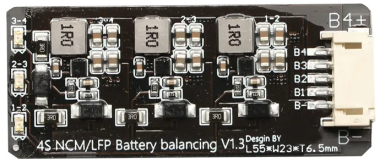
 Design with 4S Li-Ion Battery Active Balancer in Cirkit Designer
Design with 4S Li-Ion Battery Active Balancer in Cirkit DesignerIntroduction
The 4S Li-Ion Battery Active Balancer is an essential component designed to maintain the charge and discharge levels of each cell in a 4-cell (4S) lithium-ion battery pack. By actively balancing the cells, the balancer ensures that all cells have an equal voltage, which is crucial for maximizing the battery pack's performance, efficiency, and lifespan. Common applications include electric vehicles, portable power packs, and any system that relies on a 4S Li-Ion battery configuration.
Explore Projects Built with 4S Li-Ion Battery Active Balancer
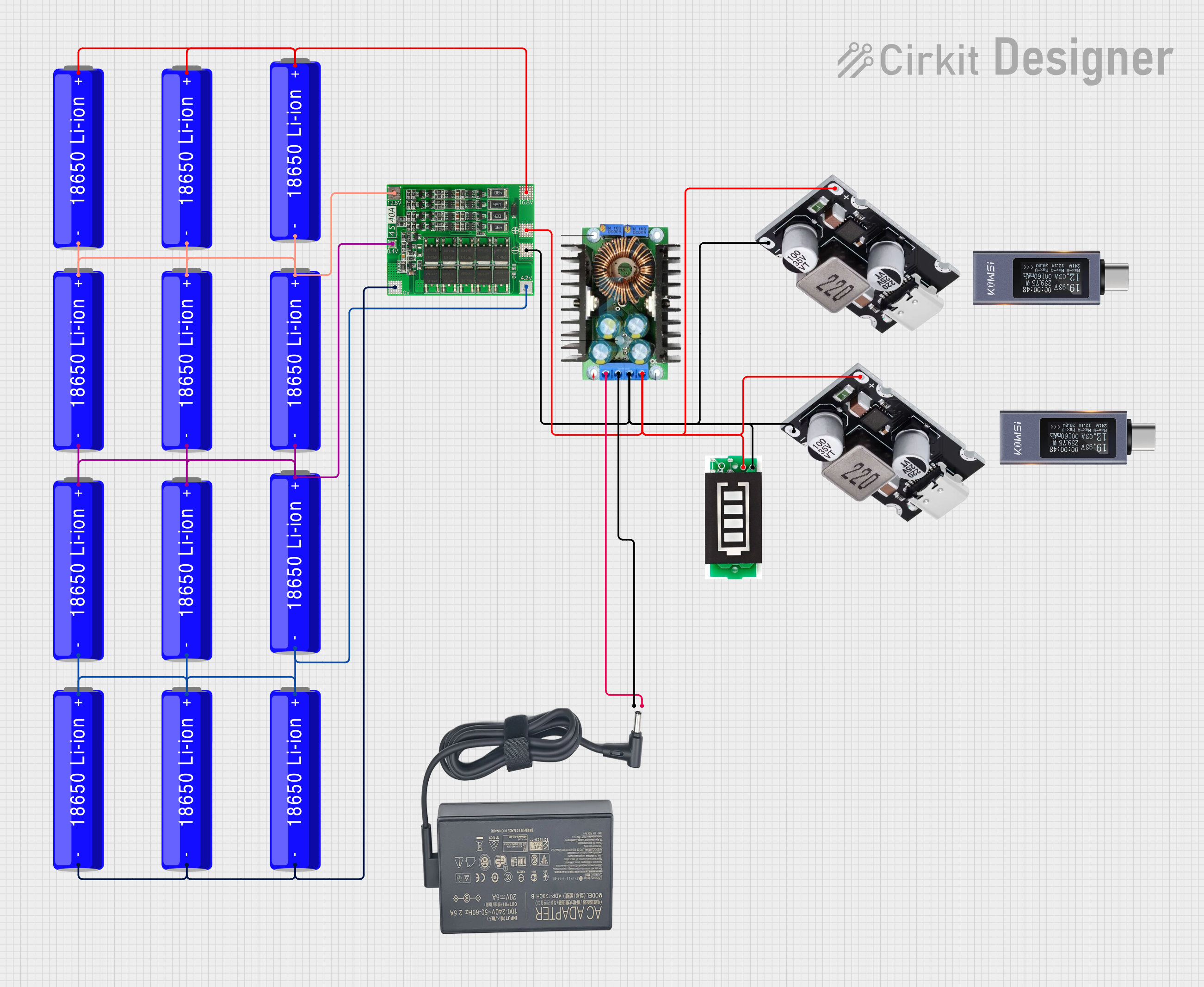
 Open Project in Cirkit Designer
Open Project in Cirkit Designer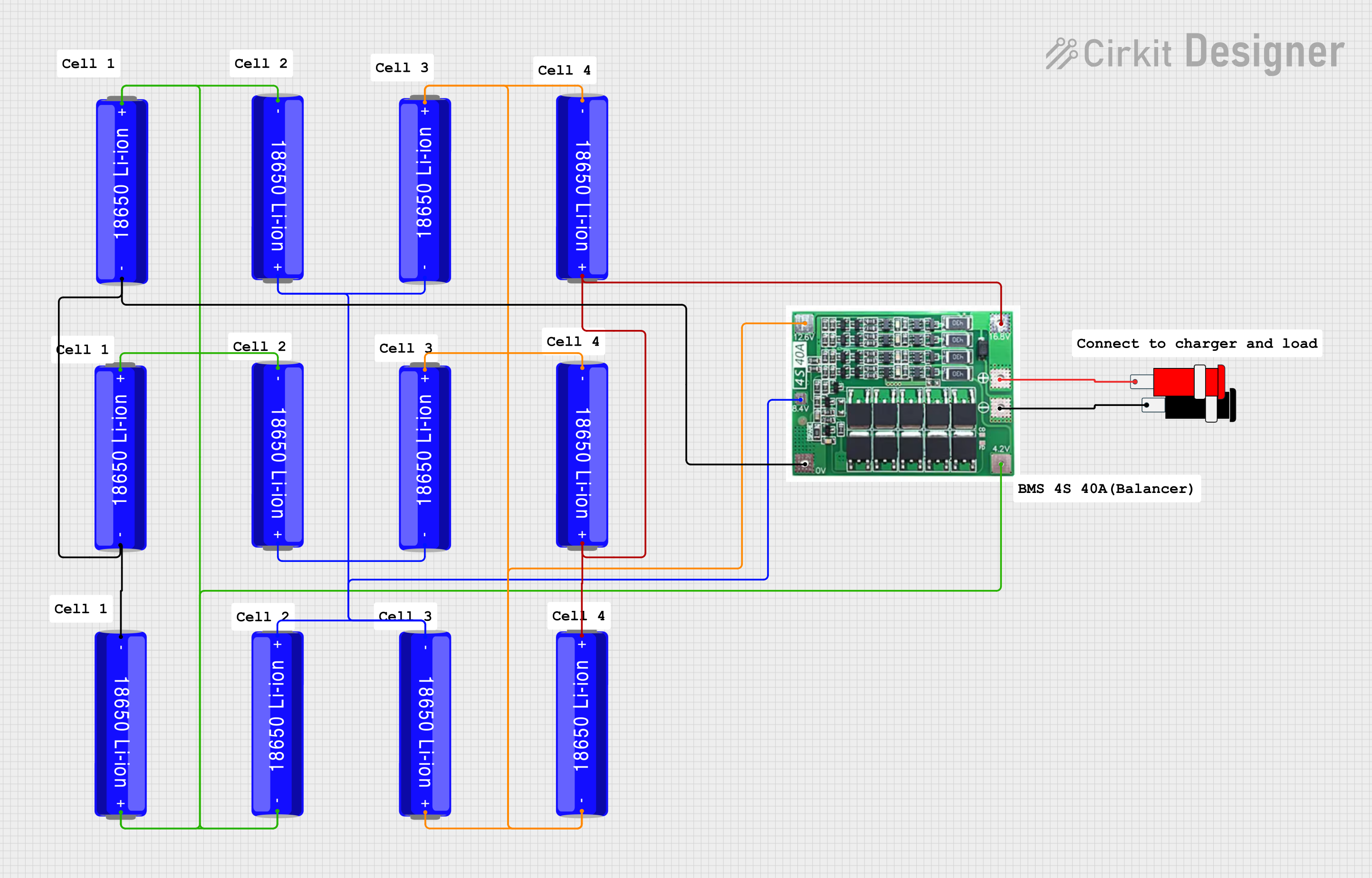
 Open Project in Cirkit Designer
Open Project in Cirkit Designer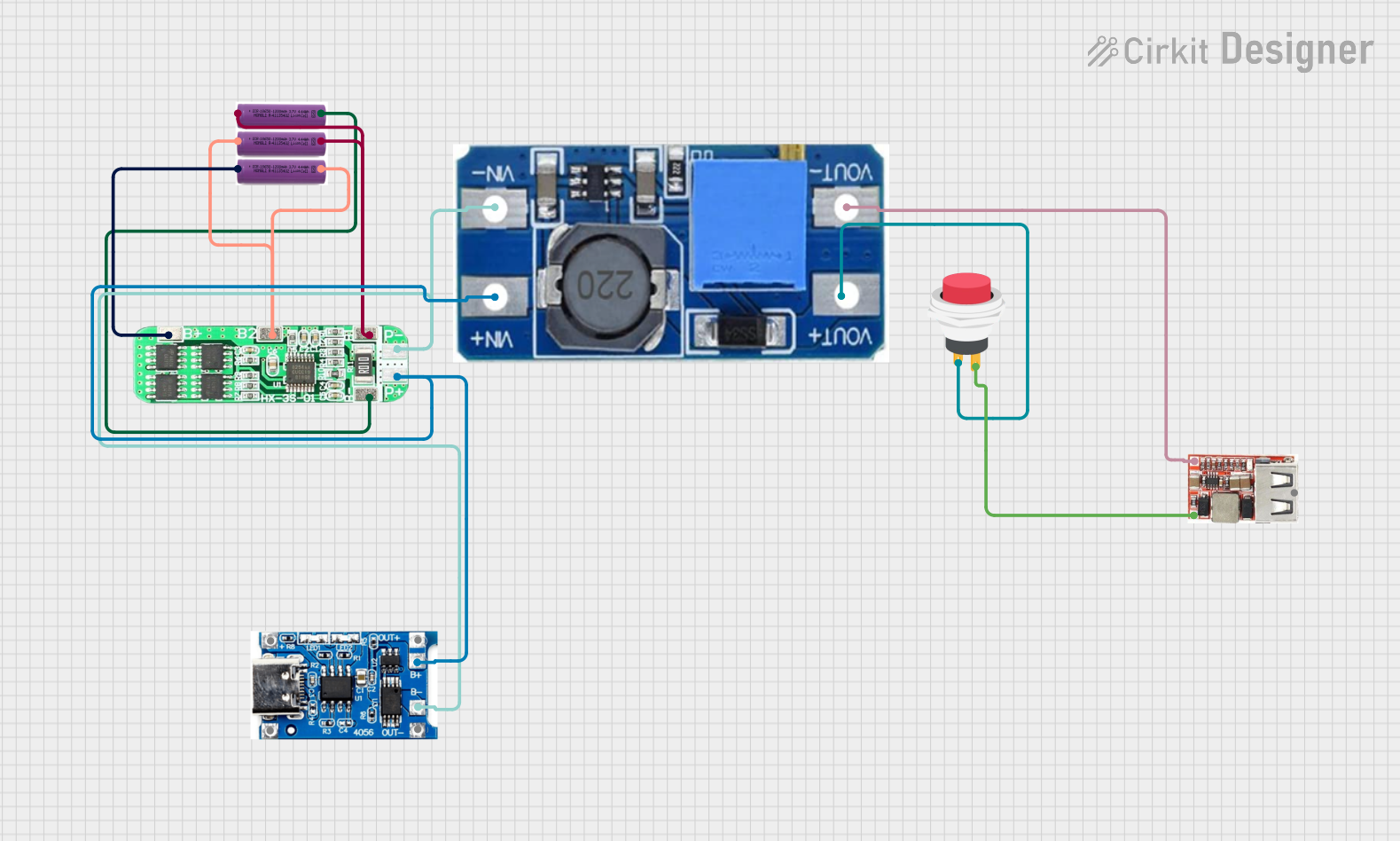
 Open Project in Cirkit Designer
Open Project in Cirkit Designer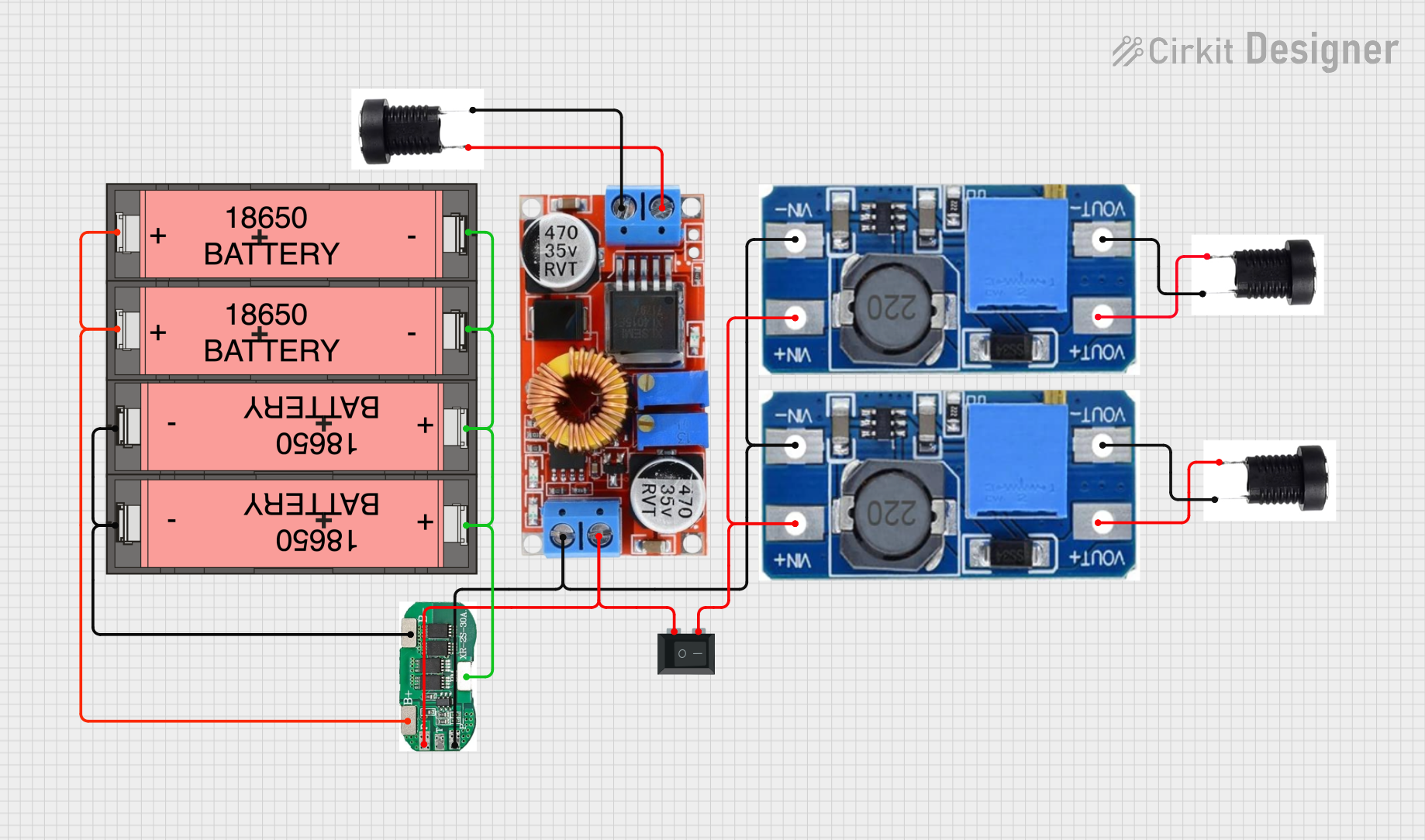
 Open Project in Cirkit Designer
Open Project in Cirkit DesignerExplore Projects Built with 4S Li-Ion Battery Active Balancer

 Open Project in Cirkit Designer
Open Project in Cirkit Designer
 Open Project in Cirkit Designer
Open Project in Cirkit Designer
 Open Project in Cirkit Designer
Open Project in Cirkit Designer
 Open Project in Cirkit Designer
Open Project in Cirkit DesignerTechnical Specifications
Key Technical Details
- Balancing Current: Up to 1.2A (typical)
- Voltage Range: 14.4V to 16.8V (3.6V to 4.2V per cell)
- Quiescent Current: <30uA
- Balancing Method: Active (energy transfer from higher to lower voltage cells)
- Operating Temperature: -20°C to +70°C
Pin Configuration and Descriptions
| Pin Number | Description | Notes |
|---|---|---|
| 1 | BATT+ (Cell 4) | Positive terminal of cell 4 |
| 2 | CELL 3 | Positive terminal of cell 3 |
| 3 | CELL 2 | Positive terminal of cell 2 |
| 4 | CELL 1 | Positive terminal of cell 1 |
| 5 | BATT- (Ground) | Negative terminal of the battery |
Usage Instructions
Integration into a Circuit
- Connection: Connect the balancer pins directly to the corresponding positive terminals of each cell in the 4S battery pack, with the BATT- pin connected to the battery's negative terminal.
- Monitoring: It is recommended to use a battery management system (BMS) in conjunction with the active balancer for comprehensive monitoring and protection.
- Charging: Ensure that the charger used is compatible with the 4S configuration and does not exceed the recommended voltage and current ratings.
Best Practices
- Temperature Monitoring: Always monitor the temperature of the battery pack during charging and discharging to prevent overheating.
- Voltage Checks: Regularly check the voltage of individual cells to ensure the balancer is functioning correctly.
- Isolation: Ensure that the balancer is properly insulated from the battery pack to prevent short circuits.
Troubleshooting and FAQs
Common Issues
- Uneven Cell Voltages: If cell voltages remain uneven after several charge/discharge cycles, check connections and ensure that all cells are healthy.
- Balancer Not Working: Verify that the balancer is correctly connected with proper polarity and that the battery voltages are within the operating range.
FAQs
Q: Can the balancer be used with batteries other than Li-Ion? A: No, this balancer is specifically designed for 4S Li-Ion battery packs.
Q: What should I do if one cell is significantly lower in voltage? A: Replace the cell if it is damaged or manually charge it to match the voltage of the other cells before reconnecting the balancer.
Q: How do I know if the balancer is actively balancing the cells? A: Measure the voltage of each cell during a charge or discharge cycle. The voltages should gradually equalize if the balancer is working.
Example Arduino UNO Code
Below is an example code snippet for monitoring the voltage of each cell in a 4S Li-Ion battery pack using an Arduino UNO. This code assumes the use of an analog-to-digital converter (ADC) for voltage measurement.
// Define the analog input pins connected to the voltage dividers
const int cell1Pin = A0;
const int cell2Pin = A1;
const int cell3Pin = A2;
const int cell4Pin = A3;
void setup() {
Serial.begin(9600);
}
void loop() {
// Read the voltage on each cell
float cell1Voltage = analogRead(cell1Pin) * (5.0 / 1023.0);
float cell2Voltage = analogRead(cell2Pin) * (5.0 / 1023.0);
float cell3Voltage = analogRead(cell3Pin) * (5.0 / 1023.0);
float cell4Voltage = analogRead(cell4Pin) * (5.0 / 1023.0);
// Print the voltages to the serial monitor
Serial.print("Cell 1 Voltage: "); Serial.println(cell1Voltage);
Serial.print("Cell 2 Voltage: "); Serial.println(cell2Voltage);
Serial.print("Cell 3 Voltage: "); Serial.println(cell3Voltage);
Serial.print("Cell 4 Voltage: "); Serial.println(cell4Voltage);
// Wait for a second before reading again
delay(1000);
}
Note: The code above does not account for voltage divider ratios. You must calculate the appropriate scaling factor based on the resistors used in your voltage divider circuit and apply it to the analogRead results to get accurate voltage readings.
This documentation provides a comprehensive overview of the 4S Li-Ion Battery Active Balancer. For further assistance or technical support, please contact the manufacturer or a professional electronics technician.